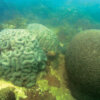“Facts About International Maritime Conventions” describes the extensive international regulations and legislation that govern all seafaring activities.
International regulations have long been seen as the best way to improve sea-going safety. In the years after World War II this jurisdiction expanded with the founding of the International Maritime Organization and its mandate “to provide machinery for cooperation among Governments in the field of governmental regulation and practices relating to technical matters of all kinds affecting shipping engaged in international trade; to encourage and facilitate the general adoption of the highest practicable standards in matters concerning maritime safety, efficiency of navigation and prevention and control of marine pollution from ships”, that is, from all sea-faring vessels including dredging vessels.
Amongst the more general regulations, certain specific guidance's have been developed for the sampling and analysis of dredged material intended for disposal at sea. These provide considerations and good practices for developing sampling plans in order to help users decide how to organise and prioritise their sampling activities to suit their particular goals, experience, budget and technical capabilities.
In addition, on a regional level, the United Nations Environment Programme (UNEP) in 1974 launched a Regional Seas Programme. The UNEP Regional Seas Programme has emerged over many decades last as the prime example of how to craft a regional approach to protecting the environment and managing natural resources. The Regional Seas Conventions and Action Plans cover issues ranging from chemical wastes and coastal development to the conservation of marine animals and ecosystems. More than 143 countries participate in 13 Regional Seas programmes.
Dredging operations are directly affected by international, regional and local regulations and through their own representative organisations try to participate in the debates surrounding the enactment of legislation. The aim of the industry is to ensure that the regulations adopted are based on sound scientific knowledge and available best practices and reflect an understanding of the processes dredging.
“Facts About International Maritime Conventions” answers essential questions such as:
- Why are International Maritime Conventions necessary?
- What is the mission of the IMO?
- What are some of the International Conventions applicable to dredging?
- What is the London Protocol?
- What is the “reverse list”?
- What is the “precautionary” approach or principle?
- What is the “adaptive” approach?
- What are the Generic and Specific Guidelines that pertain to dredging?
- What are the IMO Guidance's that apply to dredging and maritime construction?
- What other Conventions may be relevant to dredging?
- What regional or local Conventions govern maritime/dredging activities?
- What is the European Union Water Framework Directive (WFD)?
- How do dredging organisations help shape International Maritime Policy?
- Are all aspects of dredged materials regulated by International Conventions?



